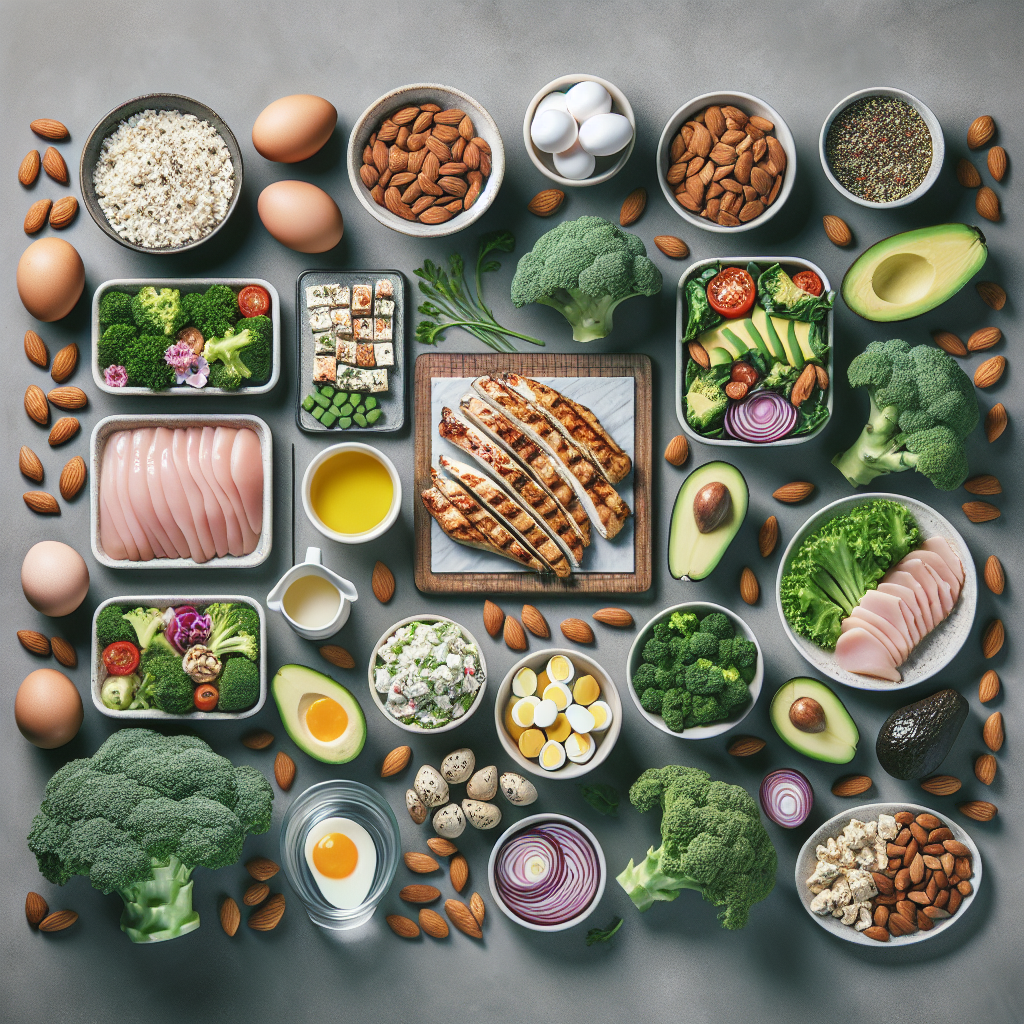Understanding Low Carb Diets
Low carbohydrate (low carb) diets have gained significant popularity as a weight loss and health improvement strategy. By reducing carbohydrate intake and increasing dietary fat and protein, you can potentially achieve weight loss, improved blood sugar levels, and better overall health markers. For beginners, creating a low carb meal plan can be both exciting and daunting. Below is a comprehensive guide to help you navigate through the process effectively.
Benefits of Low Carb Diets
- Weight Loss: Low carb diets can lead to quicker weight loss due to reduced insulin levels and increased fat burning.
- Improved Blood Sugar Control: They can stabilize blood sugar levels, which is particularly beneficial for individuals with type 2 diabetes.
- Increased Energy: Many people report higher energy levels and reduced cravings when consuming fewer carbs.
- Heart Health: Low carb diets can improve cholesterol levels and lower blood pressure.
Essential Components of a Low Carb Meal Plan
- Protein: Essential for muscle maintenance and overall health. Good sources include poultry, fish, eggs, and plant-based proteins.
- Healthy Fats: Avocados, nuts, seeds, olive oil, and butter should make up a significant portion of your meals.
- Low Carb Vegetables: Leafy greens and cruciferous vegetables are excellent choices, providing essential nutrients without high carb counts.
- Limited Fruits: Focus on berries, which are lower in sugar compared to others.
Tools and Resources
- Meal Prep Containers: Ideal for storing pre-prepared meals.
- Food Scale: Helpful for accurately measuring portions.
- Recipe Apps: Use apps like MyFitnessPal or Yummly to track nutrition and find low carb recipes.
Sample Low Carb Meal Plan for Beginners
Day 1
- Breakfast: Scrambled eggs with spinach and feta cheese, sautéed in olive oil. Serve with ¼ of an avocado.
- Lunch: Grilled chicken salad with mixed greens, cherry tomatoes, cucumbers, olives, and a vinaigrette dressing.
- Dinner: Zucchini noodles with pesto and grilled shrimp.
Day 2
- Breakfast: Greek yogurt topped with chia seeds and a handful of raspberries.
- Lunch: Lettuce wraps filled with turkey, cheese, and sliced bell peppers. Add a small serving of guacamole.
- Dinner: Baked salmon with asparagus drizzled with lemon and olive oil.
Day 3
- Breakfast: Smoothie made with unsweetened almond milk, spinach, and protein powder.
- Lunch: Cobb salad with hard-boiled eggs, bacon bits, blue cheese, avocado, and a low-carb dressing.
- Dinner: Beef stir-fry with broccoli, bell peppers, and coconut aminos.
Tips for Success
- Plan Ahead: Meal prep on weekends to ensure you have low carb meals ready throughout the week.
- Stay Hydrated: Drink plenty of water to support digestion and overall health.
- Limit Processed Foods: Opt for whole foods whenever possible to avoid hidden sugars and carbs.
- Experiment with Recipes: Try new ingredients and cooking techniques to keep your meals exciting.
- Listen to Your Body: Pay attention to hunger cues and adjust portion sizes as necessary.
Grocery List for a Low Carb Meal Plan
Proteins
- Chicken breast or thighs
- Salmon or other fish
- Eggs
- Ground beef or turkey
- Tofu (for a plant-based option)
Healthy Fats
- Olive oil
- Avocados
- Nuts (almonds, walnuts)
- Seeds (chia, flaxseed)
Low Carb Vegetables
- Spinach
- Broccoli
- Cauliflower
- Bell peppers
- Zucchini
Dairy and Alternatives
- Greek yogurt (unsweetened)
- Cheese (cheddar, feta)
- Unsweetened almond milk
Herbs and Spices
- Basil
- Oregano
- Garlic powder
- Cumin
Adjusting the Meal Plan
As you become acquainted with your new low carb lifestyle, keep in mind that adjustments may be necessary. Monitor your energy levels, hunger, and overall health to tweak portion sizes and macronutrient ratios. You might find that a stricter or more relaxed approach works better for you.
Snack Ideas for Low Carb Diets
- Celery Sticks with Cream Cheese: Quick and crunchy, providing fiber and healthy fat.
- Mixed Nuts: A satisfying and portable snack, just watch portion sizes.
- Cheese Cubes: They deliver a good protein hit and are easy to prepare.
- Hard-Boiled Eggs: Great for protein and easily prepared in advance.
Keeping It Sustainable
To make your meal plan sustainable, consider incorporating variations and seasonal ingredients to avoid monotony. Additionally, involving friends or family in your dietary journey can create accountability and enhance social engagement.
Low Carb Resources
- Books: “The New Atkins for a New You” offers a comprehensive approach to starting your low carb journey.
- Websites: Sites like ruled.me provide an abundance of recipes and meal plans.
- Cooking Classes: Look for local classes focusing on healthy meal preparations.
Staying Motivated and On Track
Track your meals, reflect on your daily experiences in a journal, and celebrate small victories. Finding an online community or a local support group can further motivate and inspire you as you navigate your low carb lifestyle.
Essential Supplements
While most nutrients should come from food, some may consider supplements for additional support:
- Omega-3 Fatty Acids: Great for heart health.
- Electrolytes: Especially important during the initial phase of a low carb diet.
- Multivitamins: To cover any potential nutrient gaps.
Conclusion
Embarking on a low carb journey doesn’t have to be complex. With careful planning and a variety of tasty options, creating a beginner-friendly low carb meal plan is entirely achievable and enjoyable. Whether it’s focusing on whole foods, experimenting with new recipes, or utilizing resources, you can create a nourishing and sustainable diet that supports your health goals.
